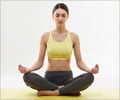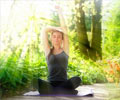- Yoga enhances cognitive abilities like concentration and memory
- It promotes emotional regulation and stress management
- Yoga poses improve physical coordination and posture
Yoga for Children and Young People's Mental Health and Well-Being: Research Review and Reflections on the Mental Health Potentials of Yoga
Go to source). It has a major impact on cognitive abilities such as concentration, memory, and emotional regulation. Yoga helps youngsters develop better focus and attention, which are essential for scholastic performance and daily duties. Yoga incorporates attentive breathing and relaxation practices, which can help with memory retention and recall. Yoga also promotes self-awareness and emotional control, which teaches children how to properly handle stress and emotions.
Yoga Postures that Improve Children's Cognitive Health
Here are some simple yoga poses that are very beneficial for children's cognitive skills:Yoga can help kids develop better focus and memory through simple poses like Tree Pose and Downward-Facing Dog.’
Vrksasana (Tree Pose)
To perform this balancing pose, start by shifting your weight onto your right foot. Place the sole of your left foot on your inner right thigh or calf, ensuring you avoid the knee to prevent injury. Bring your palms together in front of your chest in a praying position. To help maintain your balance, focus on a fixed point in front of you. Hold this position for a few breaths before switching sides to repeat the pose on the opposite leg. This exercise improves balance, focus, and concentration.
Marjaryasana-bitilasana (Cat-cow Pose)
Begin in a tabletop position on your hands and knees. As you inhale, arch your back into Cow Pose, lifting your head and tailbone towards the sky. On the exhale, round your spine into Cat Pose, tucking your chin to your chest and your tailbone under. Continue to flow between these two positions in sync with your breath. This exercise enhances spinal flexibility, coordination, and breath awareness.
Adho Mukha Svanasana (Downward-Facing Dog)
To perform this pose, start on your hands and knees. Lift your hips up and back, straightening your legs to form an inverted V shape. Spread your fingers wide and press firmly into your hands. Keep your head between your arms, aligning your ears with your upper arms. This pose strengthens the entire body, improves circulation, and calms the mind.
Balasana (Child’s Pose)
To perform this pose, kneel on the floor and sit back on your heels. Spread your knees wide apart, bringing your big toes to touch. Lower your torso between your thighs and extend your arms forward or rest them by your sides. Rest your forehead on the mat. This pose calms the mind, relieves stress, and gently stretches the back.
Baddha Konasana (Butterfly Pose)
To practice Butterfly Pose, start by sitting with your legs extended straight in front of you. Bend your knees and bring the soles of your feet together, allowing your knees to fall out to the sides. Hold your feet with your hands and sit up tall, lengthening your spine. Gently flap your legs up and down like butterfly wings. This pose opens the hips, improves posture, and enhances flexibility.
Cobra Pose (Bhujangasana)
To practice Cobra Pose, begin by lying on your stomach with your hands placed under your shoulders. Press into your hands and gently lift your chest off the ground while keeping your elbows close to your body and your shoulders away from your ears. Hold this position for a few breaths, feeling the stretch in your spine, and then lower back down slowly. Cobra Pose strengthens the spine, opens the chest, and enhances mood.
Sukhasana (Easy Pose)
To practice Easy Pose, start by sitting on the floor with your legs crossed comfortably in front of you. Rest your hands on your knees with your palms facing up or down. Sit up tall, lengthening your spine, and close your eyes if comfortable. Take deep, mindful breaths, focusing on the sensation of each inhale and exhale. Easy Pose promotes calmness, improves posture, and enhances focus and mindfulness.
Tips for Yoga with Kids
- Include stories or themes in the poses to make it more entertaining and engaging.
- Encourage deep and deliberate breathing.
- Practice in a peaceful and distraction-free setting.
- Keep sessions short and lighthearted, gradually increasing the duration as children feel more comfortable.
Reference:
- Yoga for Children and Young People's Mental Health and Well-Being: Research Review and Reflections on the Mental Health Potentials of Yoga - (https://pubmed.ncbi.nlm.nih.gov/24765080/)
Source-Medindia
















